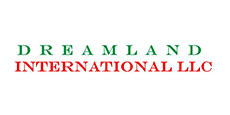In the complex business operations landscape, ensuring financial integrity and compliance is paramount. Among the strategies employed to achieve this, internal and external audits are cornerstones, each playing distinct yet complementary roles. Let’s delve into internal and external audits, unravelling their intricacies and shedding light on their contributions to organizational governance and accountability.
Before delving into the nuances of internal and external audits, it’s essential to grasp their fundamental definitions and the rationale behind distinguishing between them.
Definition of Internal Audit
Internal audit constitutes an independent, objective assurance and consulting activity designed to add value and improve an organization’s operations. It aids in accomplishing its objectives by taking a systematic, disciplined approach to evaluating and enhancing the effectiveness of risk management, control, and governance processes.
Definition of External Audit
Conversely, external audit refers to examining financial statements and records conducted by an independent auditor. The primary goal is to provide an unbiased opinion on the accuracy and fairness of an organization’s financial statements, ensuring they are free from material misstatements and errors.
Importance of Understanding the Differences
Understanding the disparities between internal and external audits is crucial for stakeholders at all levels of an organization. It helps delineate their distinct purposes, scopes, and methodologies, fostering transparency and accountability across the board.
Internal Audit: Exploring Its Purpose and Scope
Now, let’s shine the spotlight on internal audit, dissecting its purpose, scope, and the manifold benefits it brings.
- Definition and Objectives
Internal audit functions as a proactive mechanism to evaluate and improve the effectiveness of risk management, control, and governance processes. Unlike external audits, which primarily focus on financial statements, internal audits encompass a broader spectrum, including operational efficiency, compliance with policies and regulations, and safeguarding assets.
- Key Responsibilities
Top audit firms in Oman recognize the multifaceted responsibilities of internal audit. These may include conducting risk assessments, evaluating the adequacy of internal controls, identifying process inefficiencies, and recommending remedial actions to mitigate risks and enhance operational effectiveness.
- Benefits to the Organization
The merits of a robust internal audit function extend far beyond regulatory compliance. It serves as a proactive tool for identifying emerging risks, enhancing operational efficiency, and fostering a culture of accountability and continuous improvement within the organization. By providing valuable insights and recommendations, internal audit adds tangible value to the business, bolstering its resilience in the face of evolving challenges.
External Audit: Unveiling Its Role and Significance
While internal audits focus on internal processes and controls, external audits take a more external-facing approach, scrutinizing financial statements to assure external stakeholders.
- Definition and Objectives
External audit aims to provide an independent and impartial assessment of an organization’s financial statements. Its primary objective is to instil confidence among investors, creditors, and other external stakeholders by ensuring the accuracy and reliability of financial information presented by the entity.
- Key Responsibilities
Top audit firms in Oman undertake external audits with meticulous attention to detail and adherence to professional standards. They verify the accuracy of financial statements, assess compliance with accounting principles and regulatory requirements, and provide an opinion on whether the financial statements present an accurate and fair view of the organization’s financial position and performance.
- Importance in Maintaining Transparency and Credibility
External audits play a pivotal role in upholding transparency and credibility in financial reporting. By validating financial statements independently, external auditors instil trust and confidence among stakeholders, facilitating informed decision-making and fostering investor confidence in the organization’s financial health.
Comparative Analysis: Contrasting Internal and External Audits
Now that we’ve dissected the roles and responsibilities of internal and external audits individually let’s compare them to understand their divergent approaches and a collaborative potential better.
- Differences in Focus and Audience
Internal audits primarily focus on assessing internal processes, controls, and risks, catering to the needs of internal stakeholders such as management and the board of directors. In contrast, external audits are geared towards assuring external parties, including investors, creditors, and regulatory authorities, regarding the accuracy and reliability of financial statements.
- Variances in Approach and Methodology
While internal and external audits share the goal of ensuring accuracy and reliability, they employ distinct approaches and methodologies to achieve this objective. Internal audits are more flexible and tailored to the organization’s needs, often involving a collaborative and consultative process. External audits, on the other hand, follow a more standardized and rigorous procedure governed by auditing standards and regulations.
- Collaborative Efforts for Comprehensive Risk Management
Despite their differences, internal and external audits can complement each other synergistically to strengthen the organization’s risk management framework. By leveraging the insights gleaned from internal audits, external auditors can better understand the organization’s internal controls and risk management processes, thereby enhancing the efficiency and effectiveness of their external audit procedures.
In conclusion, internal and external audits are indispensable pillars of corporate governance, each playing a unique yet complementary role in ensuring transparency, accountability, and trustworthiness in financial reporting. Organizations can navigate the complex regulatory landscape with confidence and integrity by understanding the nuances of internal and external audits and harnessing their collective potential.











